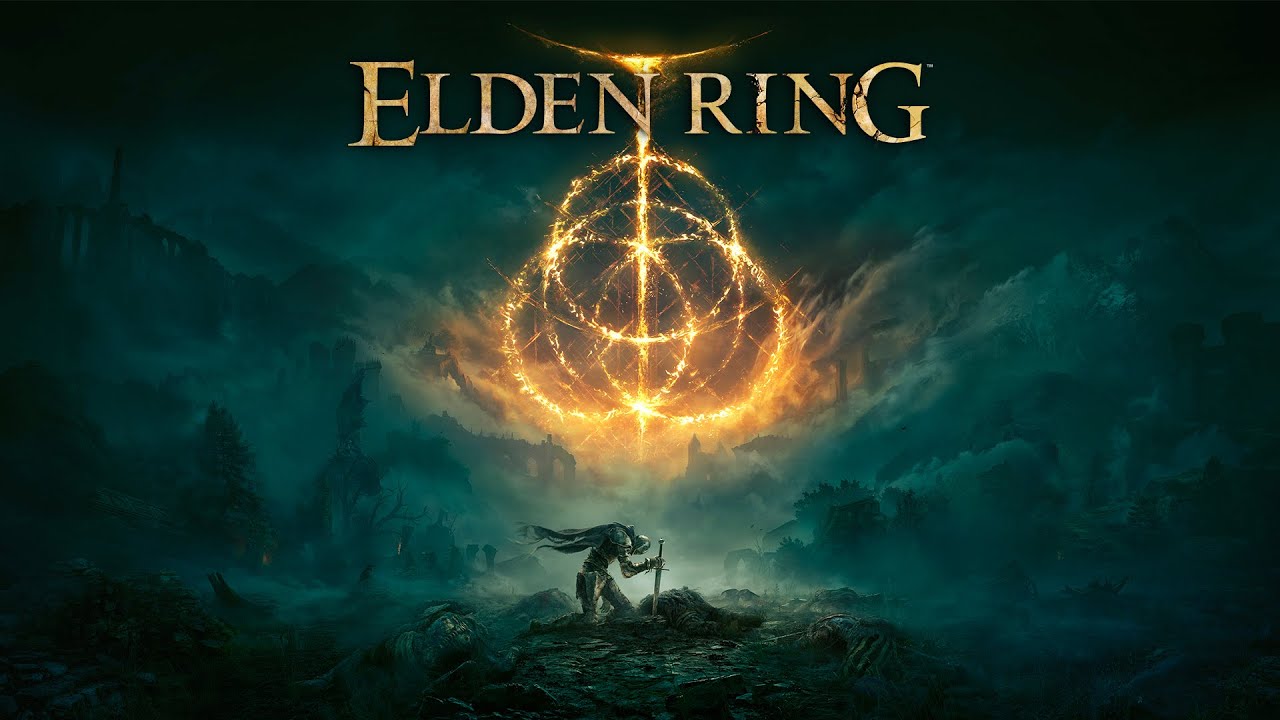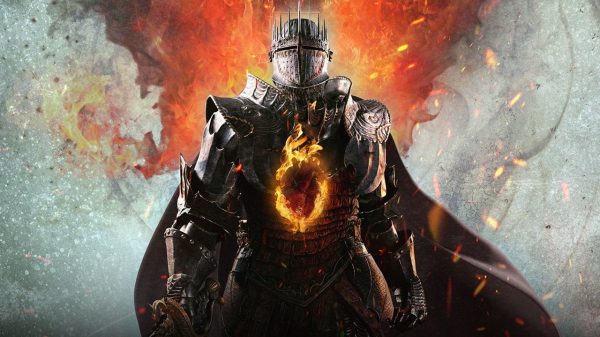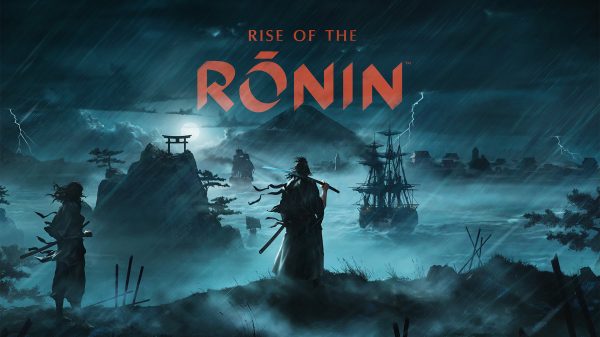There aren’t many developers whose names can instantly get me excited for a game announcement. FromSoftware is easily amongst the top for me as their games have always reached an impeccable level of quality, and every release has shown refinement and improvement. While on the technical front, FromSoftware doesn’t have the best track record, they always make up for it in other areas. Elden Ring was always poised to bear the fruits of FromSoftware’s labour, teaming up with George R.R Martin to create a brand new, hauntingly beautiful open-world RPG, and it absolutely nails it. This is FromSoft’s best work yet.
Elden Ring is set in the Lands Between. You play as the Tarnished, a voiceless individual who was banished from these lands. The titular Elden Ring has been shattered and it is up to you to find its shattered pieces and become the Elden Lord. Unsurprisingly, direct storytelling is not at the forefront of Elden Ring. This is not to say that the game has bad writing, it’s just that the game doesn’t make a note of spelling things out for you (a consistent trend throughout the whole game). For those that pay attention to every little detail in the game, there is a lot to digest. The most important details for setting everything up for you are still laid out, but anything beyond that is left for you to discover. I’m sure someone like VaatiVidya will make some insane videos diving into the deep, interesting lore of the game, but for now it’s up to you.
We have had around eleven years of Soulsborne games, and while each game has been remarkably different from the last, they have always followed basic design principles in terms of level and game design. Elden Ring does take some notes from previous titles, namely Dark Souls, whereby you are tasked to defeat certain big bad bosses and obtain objects of power that are significant to that world (Lord Souls, Old Souls and the like). However, this is where the game’s similarities end. Elden Ring is far less restrictive than the studio’s previous works. The linearity of previous games does not exist here at all. The Lands Between is a wonderfully crafted open world, and the people at FromSoft have clearly worked tirelessly to produce one of the best open worlds since The Legend of Zelda: Breath of the Wild. While there is a clear direction the game wants you to go in, it is far easier to tackle things in a non-standard order, or just tackle the big things at a much later stage. It’s this freedom that brings such a sense of wonder to Elden Ring. At the time of writing, I have put in over 60 hours into the game and have continued to discover more and more.
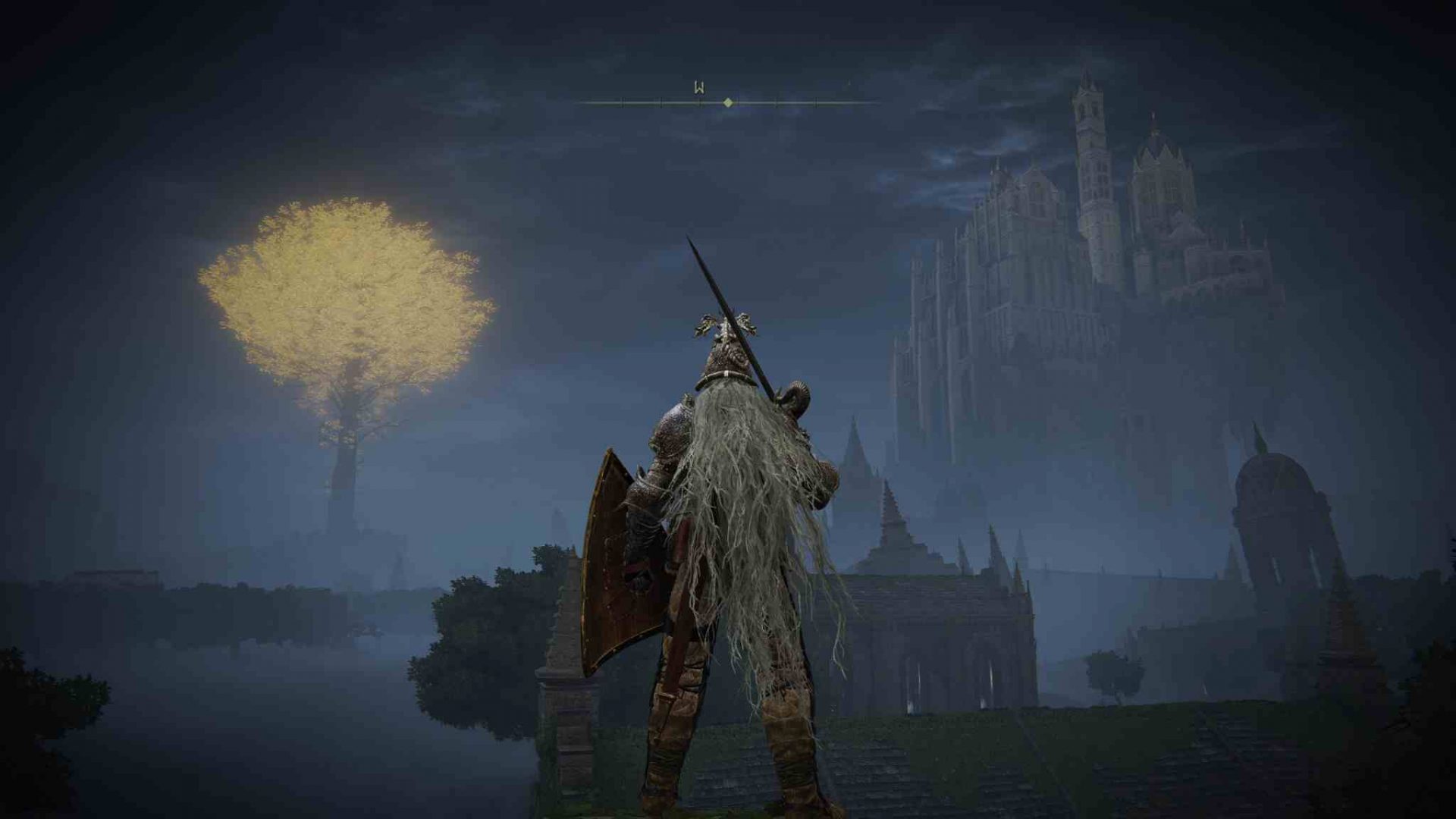
It’s hard to get open worlds right, and part of that has to do with the fact that modern open world games point everything out to you. Games like Assassin’s Creed, The Witcher, even the beloved Ghost of Tsushima to a lesser extent all point out a lot of detail for the player. Elden Ring doesn’t do this. In fact, it may as well not have any markers at all, as the only ones that really matter on the map are the fast travel points, called Sites of Grace. Everything else is placed on the map as a landmark, and only after you have gone and discovered it. You’ll need to actually look at the map itself, and see the details drawn to figure out if there is a place of interest or not. Either that or just explore the detailed world, as there is a lot to take in and it so expertly takes advantage of your natural curiosity.
Where this lack of markers and tracking really comes into play is with Elden Ring’s questing. Most RPG players are probably used to a quest log, with waypoints for activequest, but fans of FromSoftware’s games will know that this is not how these things work. When you activate a quest, the game does not care if you weren’t paying attention, it will not repeat important information and it will not keep a log of any information you have gathered. Rather, it will give you hints as to where you should look and nothing more. I personally love this, but it also makes things incredibly difficult for people with short attention spans, memory issues or that have trouble following some of the dialogue can easily find themselves overwhelmed or lost in their quests as it doesn’t take much to go in the wrong direction. The design worked really well in the Soulsborne games because their linearity meant there were a relatively small number of locations for NPCs to trigger certain events, but the scale of Elden Ring means that it’s much more important that you focus on what is being said to ensure you don’t miss any vital details.
We’ve seen glimpses of FromSoftware’s open-world design before in the early stages of Dark Souls, which is incredibly flexible, but we’re mostly used to that interwoven, interconnected level design that the series is known for. One of my main concerns with the game being open-world was this maze-like level design being lost, but it isn’t. In fact, I would argue it is better than it has ever been. The level designers have done an incredible job connecting all these areas in such a meaningful way. Whether it be caverns and mines that connect to other areas, or a pathway that links all the way back up to a Site of Grace, there is so much care put into the flow of these areas. One of the later areas, which I will just refer to as The Capital, makes such an effective use of lighting, enemy density and draw distances to guide the player down its intended path. However, rather than punish you for going off the beaten path, you are often tested and then rewarded for your curiosity. It’s a very fine balance to walk, but Elden Ring does it expertly.
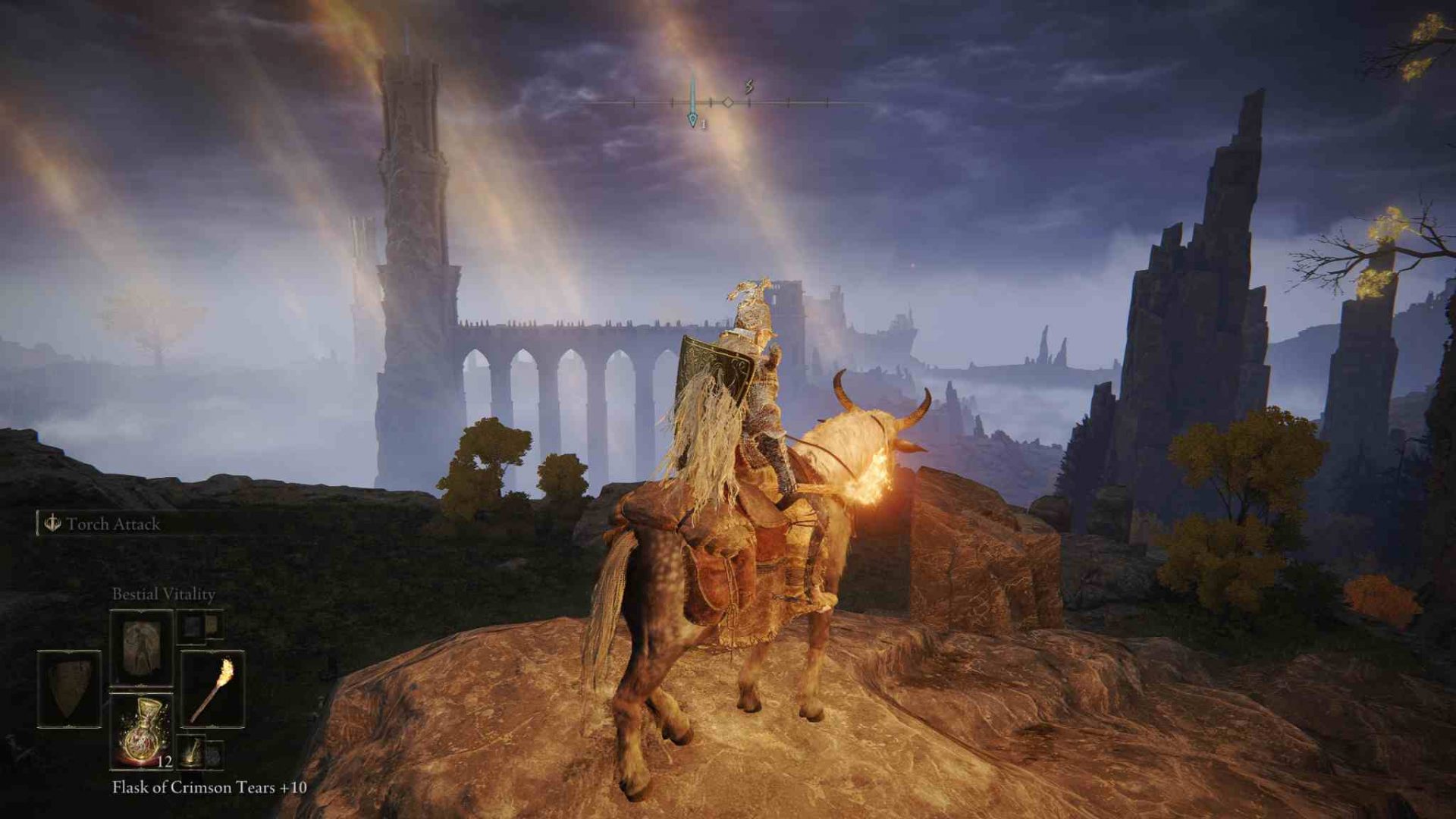
What works even better with this level design is the world building and its atmosphere. Things like walking across the petrified remains of a colossal being, carefully falling onto the rubble of a wall you were standing on, scaling the roots and branches of giant trees, it all just fits in so organically into its level design. The return of a proper functional jump like in Sekiro has also allowed for the level design to be a little more vertical, meaning that elements from the destroyed environment play a massive factor in progressing and traversing these areas. But what’s even more impressive is that you can still see how things were originally connected, it’s just that those paths have been rendered inaccessible due to the damage. It’s this level of care and logic which is put into these areas that makes them feel so organic. You don’t feel like you’re in a video game level, you feel like you’re in a world that in a state of disrepair and you’re making use of these new environmental features to make up for the irreparable damage in pathing. It’s not exactly anything new, but it’s done so well here.
I would be willing to argue that this game has the best exploration in any game that I have ever played. Not only does it make use of distinct visual features and oddities to draw your attention, but it also does such an excellent job at not being exhaustive. This world is massive and it is complex, but things are so tightly designed that each area feels like it was made with the love, care, and attention to detail that most linear games are made with. Not to mention how your actions in the game can actually have a profound impact on the world. There are some areas that only become available when completing certain tasks, so this is FromSoft’s way of making sure that the world isn’t daunting. It is massive, but it’s also scaled back in a sense that there is not too much being thrown at you at once. This has allowed the developer to tap into the exploration aspects, as rather than seeing everything at once, you string discoveries along in such an organic and elegant manner, creating a most addictive loop of exploration, combat, and rest.
This world is massive and it is complex, but things are so tightly designed that each area feels like it was made with the love, care, and attention to detail that most linear games are made with
People who have found a home in the Soulsborne games will feel relatively comfortable in Elden Ring. It follows a lot of the game design principles that have been adapted and improved over the years. We see the return of FP from Dark Souls III, and weapon skills, meaning that each weapon has its own abilities it can make use of, but what’s different here is that you can actually change those weapon skills. This mechanic is referred to as Lost Ashes, and the ability to change the weapon skill can be used to make your builds even stronger. Obviously, there are still limitations to what abilities you can change to, and these are defined in the weapon types. For instance, there are a lot of weapon skills that exclude Colossal weapons, and some that are exclusive to these weapons. On top of this, you can’t just start the game and change to whatever skill you like, you need to go out into the world and find these Lost Ashes.
There are still very small, subtle changes to the combat in Elden Ring. For starters, when you block an attack, you can perform a guard counter which acts as a very fast heavy attack. This counter will either deal solid damage, or it will play into the stance breaking mechanic. Stance breaking isn’t anything new to FromSoftware games, but Elden Ring places more importance on it. All it really serves in the end is a means to properly break the combo of a given boss or enemy by putting them into a vulnerable state in which you can perform a powerful riposte-like manoeuvre. The heavier the hit, the more stance damage you will deal, so sometimes it’s better to charge up that heavy swing if it means breaking the opponent’s stance sooner.
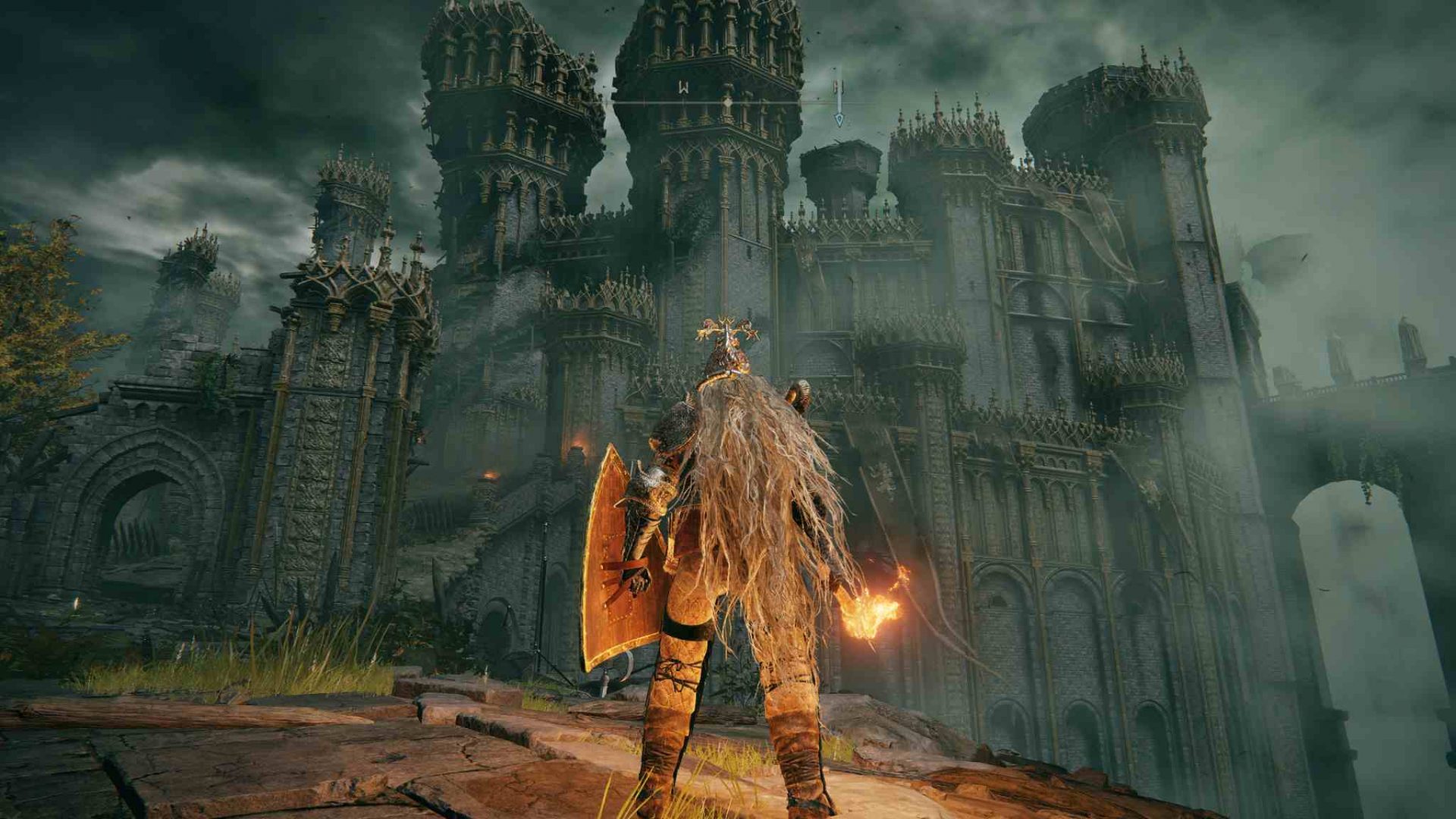
If you really want to get down into the nitty gritty, the biggest change in combat has to do with Torrent, your horse. Horses and mounts in general are a hard thing to do. Do you go down the route of The Witcher 3 and make the horse a buggy, borderline unusable mess? Or do you make it just a tool for traveling like in Breath of the Wild? There really is no right answer, but Elden Ring does a fantastic job at making Torrent a valuable tool for the player. Not only is Torrent able to traverse the world at a faster pace, you can double jump while on horseback, and occasionally have massive jumps up cliff-faces, but you can also make use of Torrent for combat purposes. Rather than make some convoluted and clunky mounted combat mechanics, FromSoftware has pulled it all back and simplified it for the best. You can swing your weapons as a light attack, heavy attack, or a charge attack, and the side on which you swing is determined by what button/trigger you press. This simplified combat is great, and its mechanic are consistent with the rest of the game but also do not come off as cumbersome.
Where this game felt really different was with its balance and power scale. I’m used to FromSoftware games where you can be in a range of level 60–80 and comfortably beat the game. My character in Elden Ring is almost double that and yet I’m still getting absolutely thrown around as if I were made of paper. It’s very clear that you are intended to reach considerably higher levels, but I just was not expecting it to this extent. Don’t get me wrong, having a giant health bar is pretty awesome, but it also feels less giant when a boss still takes most of it out. This isn’t really a problem, more just an observation and something to note for people who have played FromSoft’s previous games.
Rather than make some convoluted and clunky mounted combat mechanics, FromSoftware has pulled it all back and simplified it for the best
There is so much depth to this game, I could honestly write the longest review this website has ever seen and still feel like I have barely scratched the surface in describing what Elden Ring has to offer. The Lands Between is deep, rich, and enthralling and Elden Ring’s systems back this up incredibly well. The stealth mechanic from Sekiro also returns and can be used to get a good head start on a group of enemies, effectively counting as an easy backstab. Alternatively, it can be used to get past a group of enemies without engaging, should you prefer to avoid fighting entirely in that given situation.
It comes as no surprise to hear that Elden Ring has fantastic music. All of Miyazaki’s works have had some absolutely phenomenal soundtracks. Tracks like Darkeater Midir (Dark Souls III), Gherman (Bloodborne), and Gwyn (Dark Souls) exemplify the nuanced nature of these games’ soundtracks. They have always struck a balance between the thrilling melodies of JRPGs with the contemporary concepts of western game soundtracks to a wonderful degree. Elden Ring is no different, but the way that they weave the music between each encounter and area works so well. Not to mention the subtle use of diegetic music in some areas which helps the music feel so much more integrated into the atmosphere and feel of an area.
Elden Ring’s visuals have been a hot topic of debate lately, especially since Bluepoint remade Demon’s Souls in such a beautiful fashion. People were expecting FromSoftware to pull that same level of magic out of their bag of tricks and were subsequently disappointed when the team focused on art over raw graphical fidelity. No, this game does not push any technical boundaries like some other games have, but its art is absolutely stunning. The landscapes of the Lands Between are just beautiful. There are a lot of contrasting colours which diametrically oppose one another, but in doing so, they allow each other to pop and feel rich without being saturated. One of my favourite things to do was to ride around in the yellow fields of grass, along the charred and blackened dirt pathing, looking out at the cold blue mist that sits above certain areas. There is such an effective use of tone in its colouring that makes the world feel beautiful, but also somehow lifeless (in the best way). Cold tones come through to make everything feel dangerous, but the underlying colours lull you into a false sense of security. This game knows when its colours need to be warm, and it knows when they need to be cold. It’s a very tough balance to get right as these colours and tones can be the make or break for a game. Bloodborne’s Yharnam would never have been so incredible if its unsettling tones were spoiled by an over exuberance of warmth and tranquillity.
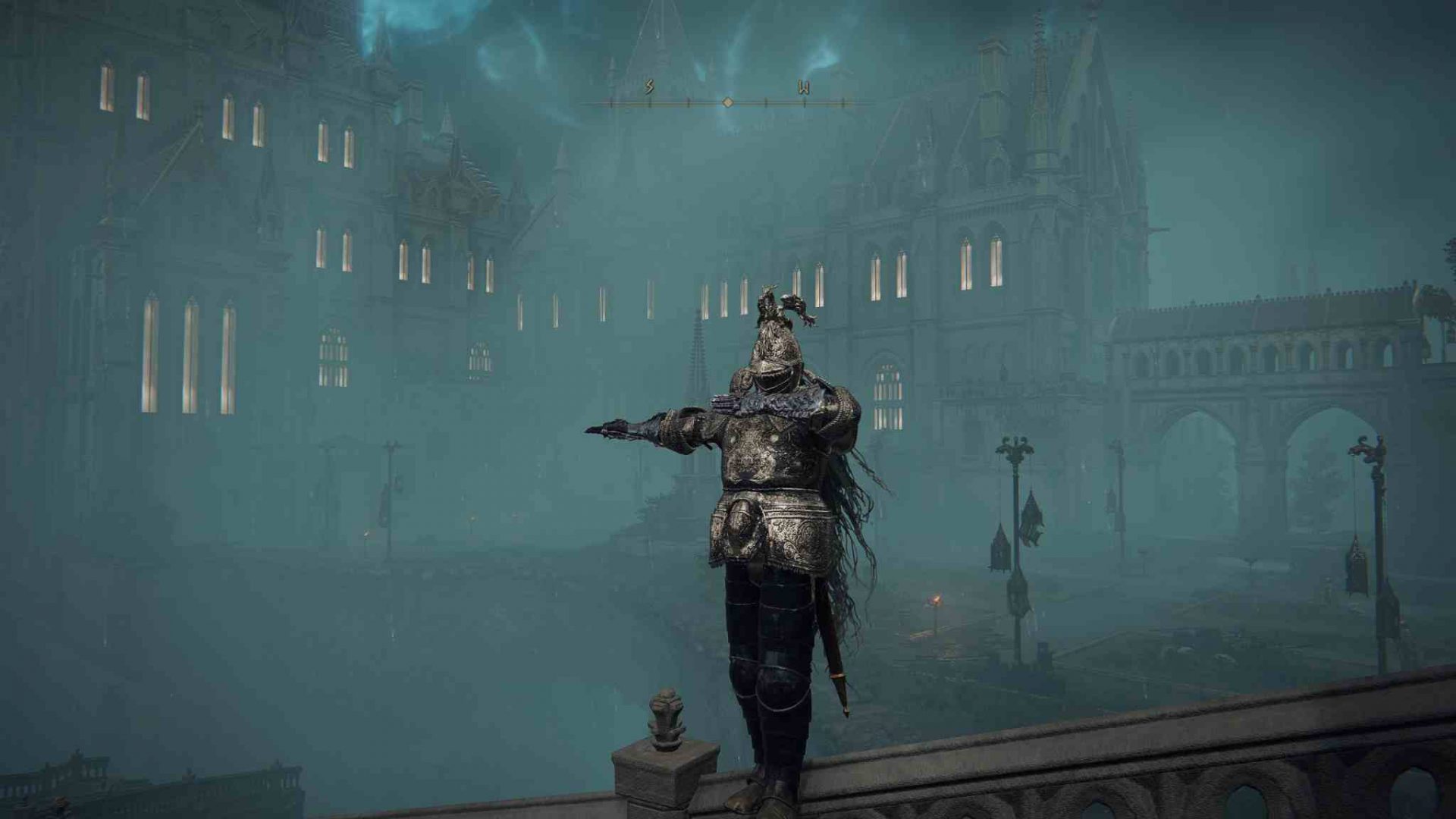
This is to not say that on a graphical level Elden Ring falls short, because it honestly still is quite a gorgeous game on that front, just that fitting every pixel is not FromSoft’s priority, nor should it be. I played most of the game at 1440p, some at 1080p, and in both instances there was still a great level of detail put into textures, models, and effects. The new effects for magic and sorceries are absolutely stunning and the lighting effects are far more concise than ever before. Now you actually have to use a torch when exploring an unlit dungeon or a cave, or else you will really risk being ambushed by things that you cannot see. It’s like what the original intention of lighting in Dark Souls II was supposed to be, except not done poorly. This also feeds into the concept of choices, whereby you can choose to stay powerfully armed but not be able to see, or you can see but be relatively helpless offensively speaking until you can pull out your weapon of choice – unless of course you have the sorcery for casting light above your head, then you are rewarded for investing in that stat.
Where Elden Ring stumbles, however, is with its performance. This comes as no surprise. FromSoftware games have kind of always run poorly, but the developer has slowly improved on that front so their games can be somewhat serviceable. Elden Ring does come under this, but it absolutely has some bizarre performance quirks. I played the game on PC, where my main desktop has a Ryzen 7 2700X and a 1080 Ti, and the performance was…questionable. It mostly ran at 60fps, but it had a habit of dipping or hitching. I opted to mostly play it on my secondary computer which sports much beefier hardware, and these issues persisted, but to a much lesser degree. Their frequency was lessened, but not eliminated, which leads me to believe that there are still some underlying performance issues. To add to this, the game is wildly prone to texture pop-in. It’s not as bad as something like Pokemon Legends: Arceus, in fact it is quite easy to ignore, but these issues are there nonetheless. I also noted that the game’s performance would begin to degrade when being played over an extended period of time. A good example of this is where I had been playing for eight hours and an area I went into was not loading its texture properly, so I saved and reloaded, and was met with an infinite loading screen, requiring a full relaunch. The last thing to note is that I encountered a weird issue where dialogue would double skip, so rather than skipping ahead to the next line, it would skip to the line after that. While these issues do definitely exist, they were never really enough to detract from the experience. It’s worth noting that this is all based on build without the day one patch, which will address a lot of these issues.
Final Thoughts
I’m concerned that FromSoftware cannot reach higher than this peak. I hate using this term, but Elden Ring feels like FromSoftware’s magnum opus. It is the culmination of a decade of refinement and improvement, and it absolutely reaps the benefits of the mistakes and success of FromSoftware’s previous works. It is a masterclass in game design, level design, world building, balance, gameplay, and exploration. It’s by no means perfect, and it can very much be an inaccessible game for some given the difficulty of its design, but I feel perfectly comfortable giving this game the highest praise possible. I can already see this being my game of the year for 2022.
Reviewed on PC // Review code supplied by publisher
Click here for more information on WellPlayed’s review policy and ethics

- FromSoftware
- Bandai Namco Entertianment
- PS5/PS4/Xbox Series X|S/Xbox One/PC
- February 25, 2022



Jordan lives and breathes Dark Souls, even though his favourite game is Bloodborne. He takes pride in bashing his face on walls and praising the sun. Hailing from the land of tacos, he is the token minority for WellPlayed.





